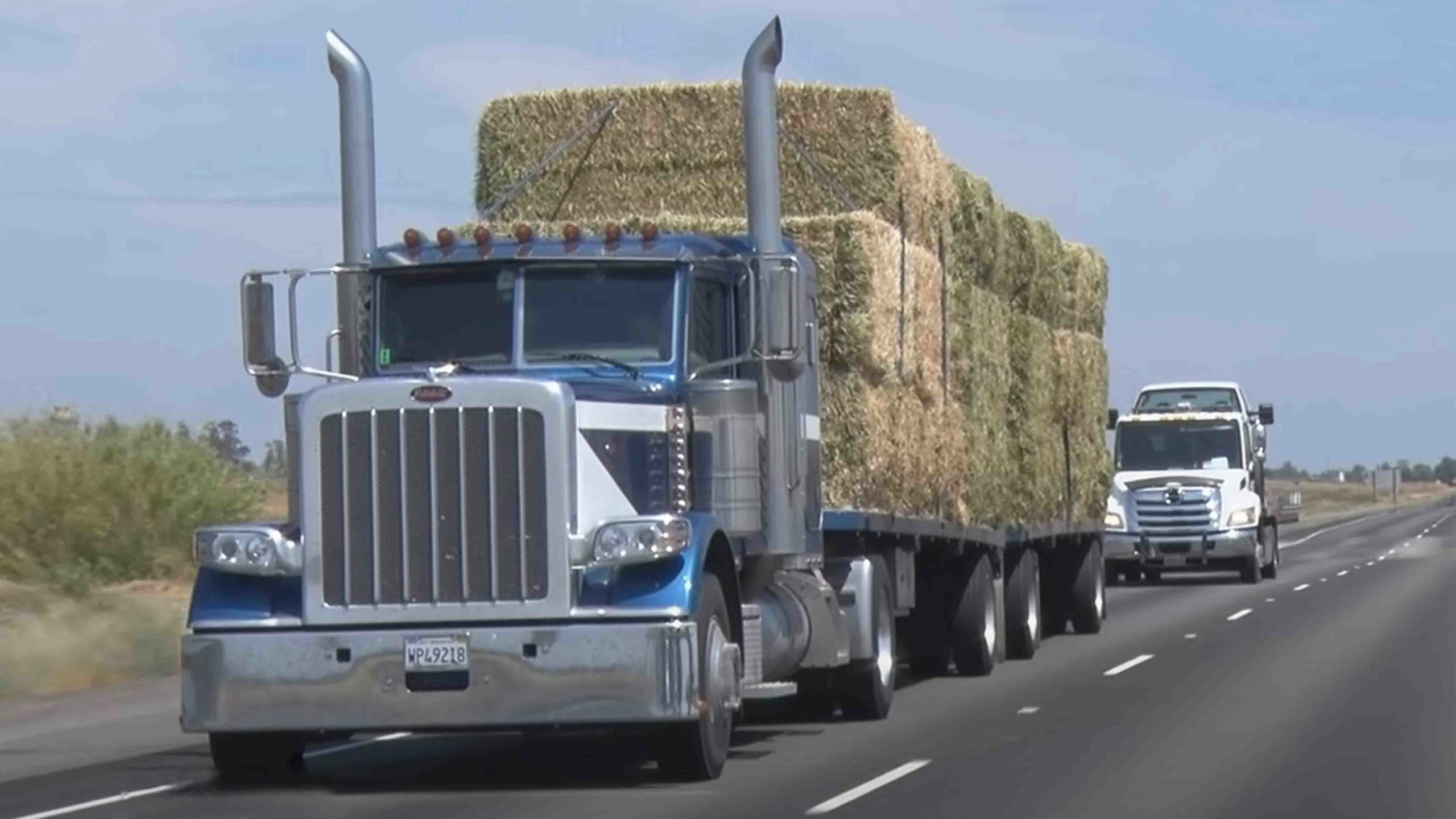Four extra driving hours in a day makes a heck of a big difference to a truck driver, particularly when hauling hay in the middle of a drought to farmers and ranchers who desperately need it.
Truckers are praising Gov. Mark Gordon’s decision to sign an emergency executive order allowing those hauling oversized loads of hay to drive for two extra hours before sunrise and two hours after sunset.
Similar executive orders have already been issued in Montana and North and South Dakota, which was the impetus for the governor’s decision to extend hours for these transporters, according to Michael Pearlman, communications director for the governor’s office.
Wyoming House Speaker Eric Barlow, R-Gillette, approached Gordon to ask about the order after hearing concerns from ag producers in Campbell County. Barlow had received a message from one of his constituents about the executive order recently signed by South Dakota Governor Kristi Noem extending allowable travel hours for hay transporters, wondering if Wyoming could do the same.
Barlow said he thought it sounded like a great idea and reached out to Gordon, who contacted Doug Miyamoto, director of the Wyoming Department of Agriculture, who agreed there was a need to extend hours. The executive order was welcomed by John Robertson, principle of J.D. Robertson Transport LLC in Rozet.
The additional driving hours will be a huge benefit to both truckers and ag producers, Robertson said, who have been hit hard by severe drought and record-high hay prices of up to $250 to $300 a ton, nearly double the cost over past year.
Most of Robertson’s hay loads come out of the Dakotas or Nebraska, and prior to the signing of the executive order, he and other drivers had to shut down in Belle Fourche, South Dakota, or another neighboring city to remain in compliance with restrictions on the hours oversized loads can be on the road.
This meant careful planning on the part of the driver to arrange his or her day, including find a place to sleep that night, which isn’t easy with oversized loads.
As Robertson said, it’s not easy to compete with tourists in travel trailers and other truckers for spots at Flying J’s and other truck stops.
“Oversized loads don’t work there because of the tight parking,” he said. “The places are designed for legal loads. We have to find places along the road or at sale barns and grain elevators. You have to know the lay of the land and what you’re doing.”
The shorter hours also cut into profits for drivers. Robertson estimated the cost at about $100 an hour, which translated to higher prices for hay buyers.
The extra four hours of travel time will not only make hauling loads worthwhile, Robertson noted, but will also help move hay in peak crunch time for producers in the Conservation Reserve Program (CRP) who have to adhere deadlines for clearing fields.
“Right now, everyone is in a crunch,” Robertson said. “These extra hours are really going to help.”
Qualifying loads can be up to 12 feet wide and 15 feet tall and drivers have to abide by weight limits and all other rules for oversized loads. The order is set to expire on Nov. 30.





